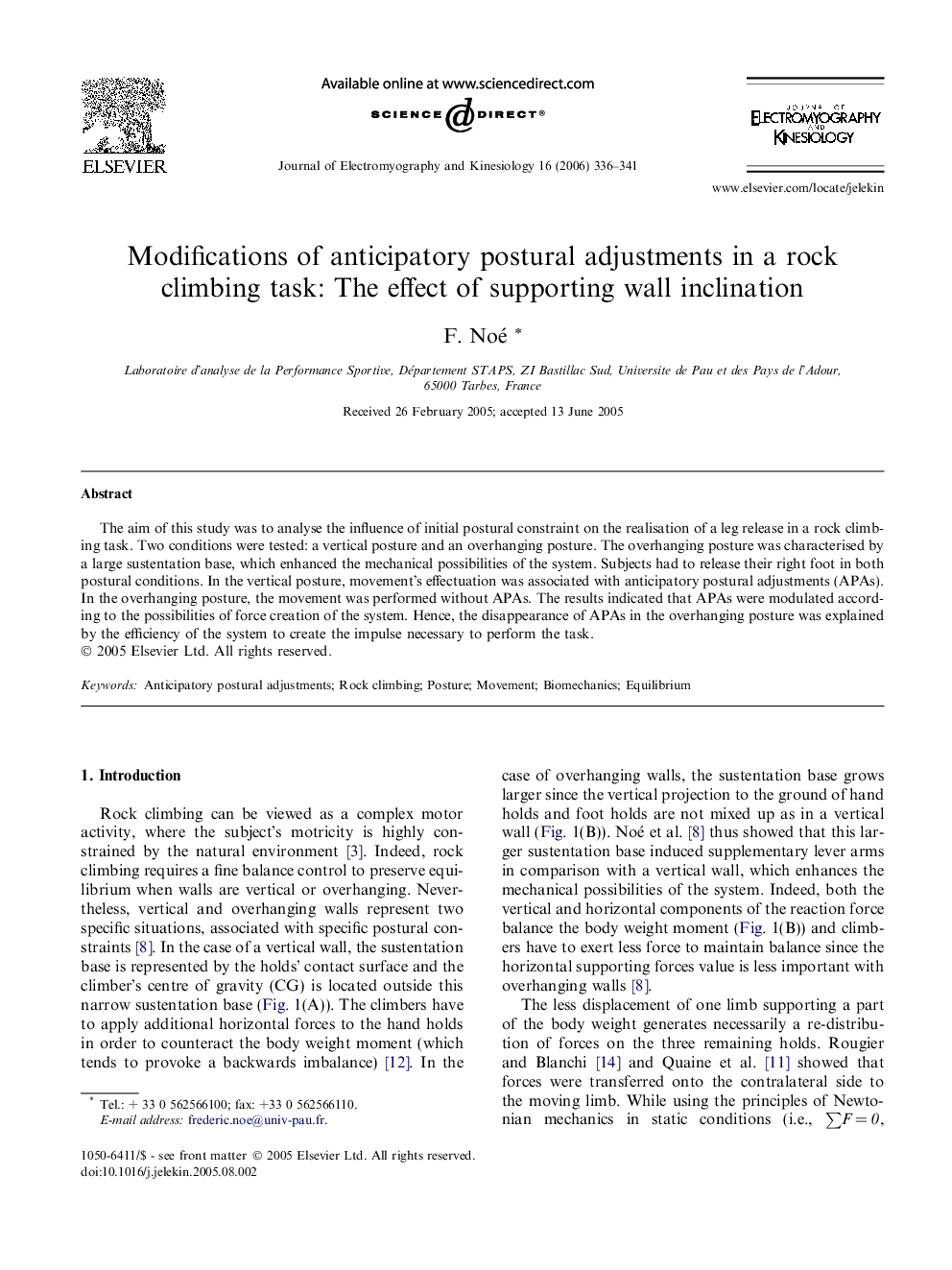| Article ID | Journal | Published Year | Pages | File Type |
|---|---|---|---|---|
| 4065758 | Journal of Electromyography and Kinesiology | 2006 | 6 Pages |
The aim of this study was to analyse the influence of initial postural constraint on the realisation of a leg release in a rock climbing task. Two conditions were tested: a vertical posture and an overhanging posture. The overhanging posture was characterised by a large sustentation base, which enhanced the mechanical possibilities of the system. Subjects had to release their right foot in both postural conditions. In the vertical posture, movement’s effectuation was associated with anticipatory postural adjustments (APAs). In the overhanging posture, the movement was performed without APAs. The results indicated that APAs were modulated according to the possibilities of force creation of the system. Hence, the disappearance of APAs in the overhanging posture was explained by the efficiency of the system to create the impulse necessary to perform the task.
